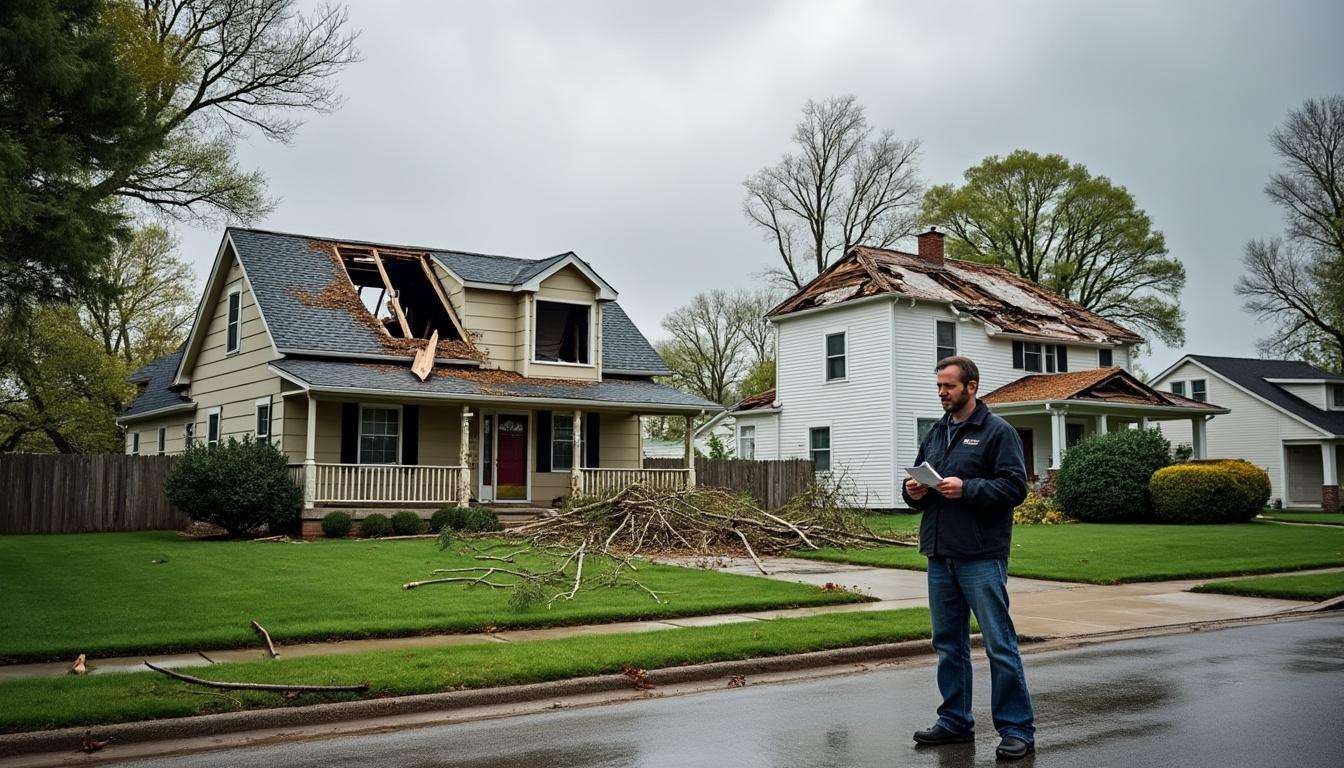Storms can leave devastation in their wake, turning lives upside down in an instant. For homeowners and vehicle owners alike, the aftermath involves more than just emotional recovery—it demands swift and strategic action to secure insurance claims. Understanding the nuances of filing a claim after significant storm damage is essential. From documenting losses to navigating insurance policies from providers like State Farm, Allstate, and Progressive, timely and accurate steps can drastically affect the settlement you receive. This article breaks down critical advice for managing claims effectively, protecting your investments, and avoiding pitfalls in 2025’s insurance landscape.
How to Document Storm Damage for a Successful Insurance Claim
The first and most crucial step in filing a storm damage claim is thorough documentation. Insurance companies, including Farmers Insurance, Nationwide, and The Hartford, rely heavily on clear evidence to process claims efficiently.
- Photograph and videotape all damage immediately after ensuring safety. Capture wide-angle shots of the overall destruction and close-ups of specific issues, such as shattered windows or roofing damage.
- Record the exact date and time of the storm and save relevant weather reports. These serve as important proof of the event’s severity.
- Prevent further damage where possible—use tarps to cover broken roofs or board up windows—but keep all receipts. Many insurers like Liberty Mutual and Geico reimburse reasonable out-of-pocket expenses incurred to mitigate additional harm.
- Compile an inventory of damaged personal possessions including descriptions, estimated value, and photos.
Neglecting these steps often leads to claim delays or denials. A homeowner in Texas, for example, found their claim denied after submitting inadequate evidence, underscoring why preparation is vital—read more about avoiding home insurance pitfalls in Texas.
Understanding Responsibility for Fallen Trees and Property Damage
One common confusion involves fallen trees after storms. Whether the tree damages your property, a neighbor’s, or just the yard, responsibility changes:
- Tree falls entirely on your property without striking structures: You likely cover removal costs yourself.
- Tree damages your house: File this with your homeowner’s insurance. Insurance companies like Travelers and USAA cover such repairs.
- Tree falls onto a neighbor’s property: Their homeowner’s policy is usually responsible, not yours.
- Vehicle damage from storm-related debris: If you hold comprehensive auto coverage with providers such as Progressive or Farmers Insurance, file via your auto insurer.
Distinguishing this early prevents unnecessary disputes and expedites claims handling. For guidance on filing auto-related claims, explore tips at Navigating The Claims Process Auto Insurance.
Protect Yourself from Scams During Storm Claim Processes
After widespread damage, scams by unscrupulous contractors or so-called adjusters surge. The Better Business Bureau warns that scammers may pose as legitimate workers demanding upfront payments or sensitive information.
- Never pay cash or upfront fees to strangers visiting your property unsolicited.
- Always verify identities by requesting official badges or contacting your insurer directly through official channels like State Farm or Allstate customer service.
- Keep your policy details confidential unless you are certain about the person’s credentials.
- Report suspicious activity promptly to local authorities and insurance providers to safeguard your claim.
Being vigilant helps you avoid costly fraud and ensures your legitimate claim progresses smoothly. For broader consumer protection strategies, see our insights on insurance companies’ tips.
Essential Steps After Filing Your Storm Damage Insurance Claim
Initiating your claim is only the beginning. Here’s how to streamline the process once your insurer acknowledges the damage:
- Arrange a home inspection with your insurance adjuster to confirm damages and discuss estimated repairs.
- Keep detailed records of all correspondence with your insurance company, including phone logs and emails.
- Consult with qualified contractors for repair estimates; sometimes insurers require multiple bids.
- Request clarification if insurance jargon hinders your understanding; many insurers like Liberty Mutual and Geico provide customer support to guide you.
- Consider temporary housing coverage if your home is uninhabitable—many policies provide hotel accommodation costs during repairs.
Following these measured steps upholds your rights and positions you for a fair settlement. Additional advice for homeowners can be found in our homeowners insurance emergency guide.
Comparative Insight: Choosing the Right Insurance Provider for Storm Coverage
With a myriad of companies like State Farm, Liberty Mutual, Geico, The Hartford, and USAA competing for customers, policyholders must evaluate comprehensive coverages tailored to severe weather risks in 2025. Factors to consider:
- Coverage limits and deductibles specific to storm-related damages.
- Claim responsiveness and rate of customer satisfaction.
- Add-ons and endorsements such as wind and hail coverage.
- Reimbursement policies for temporary repairs and lodging.
- Financial strength and reputation for settlement reliability.
Comparing providers side-by-side helps avoid surprises during catastrophes. For a detailed rundown of leading insurers, visit our top auto insurance providers and business insurance small business resources.
Frequently Asked Questions about Filing Storm Damage Insurance Claims
- How soon should I file a storm damage claim?
It is best to file as soon as possible after ensuring safety and completing initial documentation. Early claims reduce the risk of denial due to delays. - Will my insurance cover temporary repairs after a storm?
Most standard policies reimburse for reasonable expenses to prevent further damage, provided you keep receipts and inform your insurer promptly. - What if my tree falls on a neighbor’s property?
Your neighbor’s insurance is generally responsible for their property damage, but liability might be shared based on local laws. - How do I avoid scams during the claim process?
Verify all contractors and adjusters, never pay upfront, and communicate only with your insurance company through official contacts. - Can car insurance cover storm damage?
If your policy includes comprehensive coverage (offered by companies like Progressive and Farmers Insurance), storm-related vehicle damage is covered.


